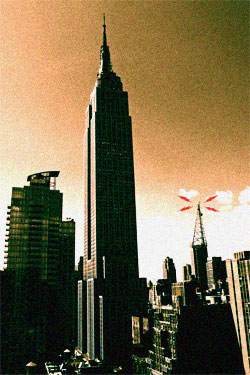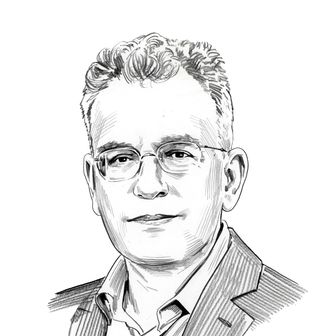
WQXR, known to generations of listeners by its tagline, ÔÇ£the classical-music station of the New York Times,ÔÇØ is changing its tune. Last night, the Times announced that itÔÇÖs selling the station to WNYC, in a three-way deal that will move WQXR to a higher spot on the FM dial (from 96.3 to 105.9) and give its former slot over to a Spanish-language station. ItÔÇÖll mean a slight power loss for WQXR, which is regrettable but understandable, given classical musicÔÇÖs diminishing cultural presence; itÔÇÖll also turn QXR into a listener-supported station, trading ad interruptions for the irritations of pledge week.
Mostly, itÔÇÖs just heartening to hear that Bach and Stravinsky didnÔÇÖt disappear from our airwaves altogether, and in fact the Times is reporting that its desire to preserve classical-music radio in New York was part of the deal-making. Nonetheless, the sale does point out, yet again, how utterly lame New YorkersÔÇÖ non-mainstream radio options are. Radio listeners who move here from smaller cities consistently discover that their preferred station has no analogue here. We barely have an indie presence, in any genre. (WFUV, FordhamÔÇÖs station, and WNYC itself are reliably smart, but New JerseyÔÇÖs WFMU barely makes it to antennae on the East Side, and WKCR, Columbia College radio, is similarly underpowered.)
Why is our on-air palette so limited? Every radio market has the same number of slots on the dial: There are 100 FM stations between 88.1 and 107.9, and another 120 slots on the AM band, which is lower-fidelity and therefore sticks mostly to talk these days. A city the size of, say, Des Moines requires one rock station, one pop station, one hip-hop, a couple of talk, maybe one Spanish-language. ThereÔÇÖs lots of room leftover for indie quirk.
New York has so many large ethnic constituencies and languages ÔÇö Spanish, Caribbean French, Chinese, Korean ÔÇö and such large markets for pop genres that the basics fill the dial. They also reach many more listeners than they would in a more sparsely populated area. That in turn drives up the price of the licenses for those frequencies, which makes it impossible for an indie station, or a classical-music station, or a ranting conspiracy theorist, to break in. We lost our last American-popular-standards broadcaster, WQEW, in 1998, which means that the city that was home to Tin Pan Alley, to Gershwin and Berlin and Cole Porter, canÔÇÖt make room on the dial for one full-time station devoted to their music. Same for country or blues, both of which have small constituencies here.
High-def radio, on the drawing board for years, could change everything. The current FM band, for example, could hold many more stations if they were broadcast in digital, rather than analog, format. (Same goes for TV, which is one big reason we all switched to HD this year ÔÇö to pack more and higher-quality stations into the airwaves, and thus make more money for the Feds and the broadcasters.) You can buy a digital radio now, and listen to quite a few stations on it, but consumers have been slow to adopt high-def, maybe because it seems like overkill. We accept low AM fidelity for talk because itÔÇÖs good enough. As for bad programming, we seem to take that without batting an ear.


